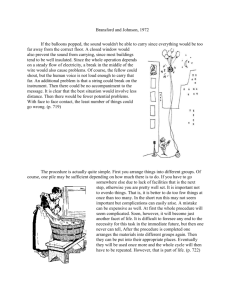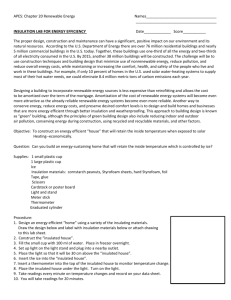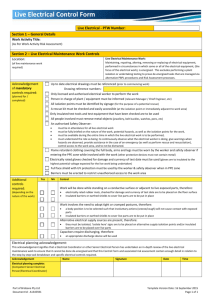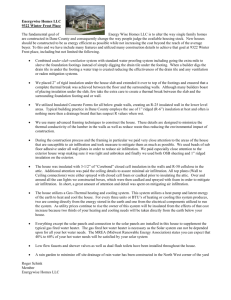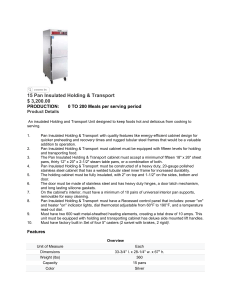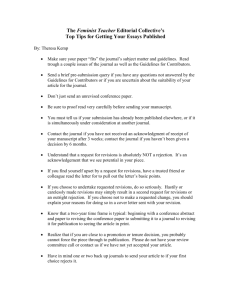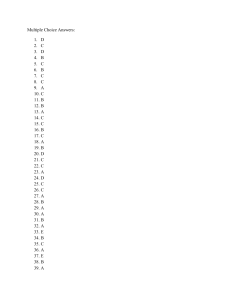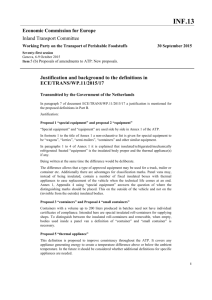Agenda
advertisement
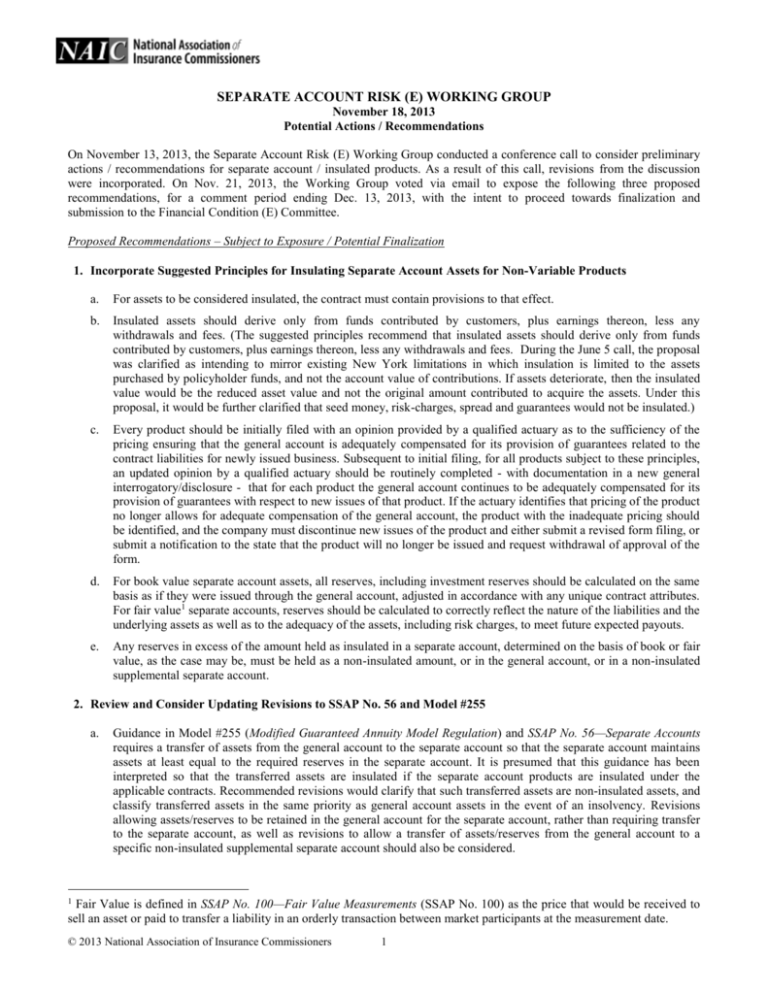
SEPARATE ACCOUNT RISK (E) WORKING GROUP November 18, 2013 Potential Actions / Recommendations On November 13, 2013, the Separate Account Risk (E) Working Group conducted a conference call to consider preliminary actions / recommendations for separate account / insulated products. As a result of this call, revisions from the discussion were incorporated. On Nov. 21, 2013, the Working Group voted via email to expose the following three proposed recommendations, for a comment period ending Dec. 13, 2013, with the intent to proceed towards finalization and submission to the Financial Condition (E) Committee. Proposed Recommendations – Subject to Exposure / Potential Finalization 1. Incorporate Suggested Principles for Insulating Separate Account Assets for Non-Variable Products a. For assets to be considered insulated, the contract must contain provisions to that effect. b. Insulated assets should derive only from funds contributed by customers, plus earnings thereon, less any withdrawals and fees. (The suggested principles recommend that insulated assets should derive only from funds contributed by customers, plus earnings thereon, less any withdrawals and fees. During the June 5 call, the proposal was clarified as intending to mirror existing New York limitations in which insulation is limited to the assets purchased by policyholder funds, and not the account value of contributions. If assets deteriorate, then the insulated value would be the reduced asset value and not the original amount contributed to acquire the assets. Under this proposal, it would be further clarified that seed money, risk-charges, spread and guarantees would not be insulated.) c. Every product should be initially filed with an opinion provided by a qualified actuary as to the sufficiency of the pricing ensuring that the general account is adequately compensated for its provision of guarantees related to the contract liabilities for newly issued business. Subsequent to initial filing, for all products subject to these principles, an updated opinion by a qualified actuary should be routinely completed - with documentation in a new general interrogatory/disclosure - that for each product the general account continues to be adequately compensated for its provision of guarantees with respect to new issues of that product. If the actuary identifies that pricing of the product no longer allows for adequate compensation of the general account, the product with the inadequate pricing should be identified, and the company must discontinue new issues of the product and either submit a revised form filing, or submit a notification to the state that the product will no longer be issued and request withdrawal of approval of the form. d. For book value separate account assets, all reserves, including investment reserves should be calculated on the same basis as if they were issued through the general account, adjusted in accordance with any unique contract attributes. For fair value1 separate accounts, reserves should be calculated to correctly reflect the nature of the liabilities and the underlying assets as well as to the adequacy of the assets, including risk charges, to meet future expected payouts. e. Any reserves in excess of the amount held as insulated in a separate account, determined on the basis of book or fair value, as the case may be, must be held as a non-insulated amount, or in the general account, or in a non-insulated supplemental separate account. 2. Review and Consider Updating Revisions to SSAP No. 56 and Model #255 a. Guidance in Model #255 (Modified Guaranteed Annuity Model Regulation) and SSAP No. 56—Separate Accounts requires a transfer of assets from the general account to the separate account so that the separate account maintains assets at least equal to the required reserves in the separate account. It is presumed that this guidance has been interpreted so that the transferred assets are insulated if the separate account products are insulated under the applicable contracts. Recommended revisions would clarify that such transferred assets are non-insulated assets, and classify transferred assets in the same priority as general account assets in the event of an insolvency. Revisions allowing assets/reserves to be retained in the general account for the separate account, rather than requiring transfer to the separate account, as well as revisions to allow a transfer of assets/reserves from the general account to a specific non-insulated supplemental separate account should also be considered. 1 Fair Value is defined in SSAP No. 100—Fair Value Measurements (SSAP No. 100) as the price that would be received to sell an asset or paid to transfer a liability in an orderly transaction between market participants at the measurement date. © 2013 National Association of Insurance Commissioners 1 In making this recommendation, it is emphasized that consideration of whether modified guaranteed annuities products should ever be classified as insulated products is still a topic for discussion. The recommendation above is strictly to clarify that transfers from the general account to the separate account for separate account reserve shortfalls are non-insulated and should not be construed to support the insulation of MGA products. 3. Review and Consider Updating Revisions to Model #200 a. Guidance in Model #200 (Separate Accounts Funding Guaranteed Minimum Benefits for Group Contracts Model Regulation) already prescribes insulation limitations for contract holder contributions and earnings thereon. However, consideration is recommended to ensure all of the following product categories are addressed with Model #200: 1) market value / insulated, 2) book-value / non-insulated, and 3) book value / insulated. b. For separate accounting products measured at book value (insulated or non-insulated) captured in Model #200, analysis and consideration should occur to determine asset diversification and related requirements should apply. c. Revisions to Model #200 should also be reviewed to ensure adequate compensation to the general account for guarantees. d. The limited state adoption of Model #200 (and #255) may impact the revisions being considered as a formal process to open and revise the model will require state support to bring the model to legislation. Consideration may occur on whether these models should be deleted and incorporated in a different structure. g:\data\stat acctg\1. statutory\c. subgroups\a. active subgroups\separate accounts\2012 separate account risk wg\11-20-2013 exposures\11-21-2013 exposure - dec 13 deadline.docx © 2013 National Association of Insurance Commissioners 2

